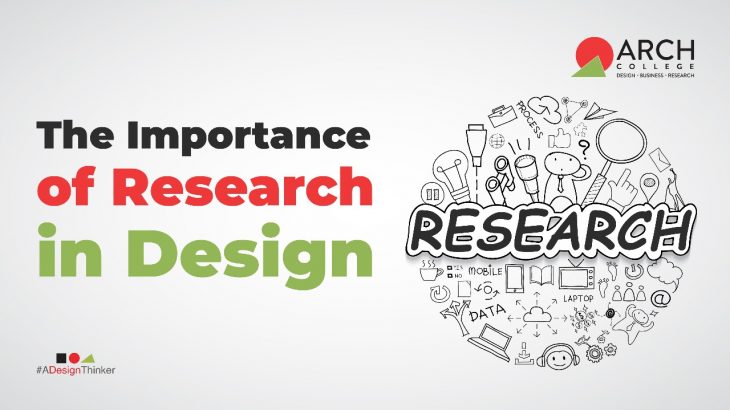Life is the ultimate classroom, and here’s the twist, there’s no bell to signal the end of the lesson. No matter your experience, there’s always something new to explore, learn, and find inspiration in. The world is constantly evolving, offering new insights, information, and experiences. Research opens doors to the unexplored, allowing you to view the world through diverse lenses and nurturing a deeper comprehension.
Certain fields thrive on research, acting as a cornerstone for success. Yet, even in areas where it’s not mandatory, research remains a potent driver for progress and insight. While it’s possible for the design process to proceed without research, It can be a valuable tool that assists us in solving problems, making discoveries, and gaining a deeper understanding of the world. Without attempting to comprehend our surroundings, we lack awareness of what, how, and sometimes even for whom we are designing.
How does research spice up the design?
In the world of design, solutions emerge through a process of problem identification, creative exploration, and strategic implementation, ensuring the end result effectively addresses challenges. Research in design process serves as the foundation for creating user-centered solutions. Delving into users’ perspectives, behaviors, and needs, provides designers with invaluable insights.
Through research, designers aim to converse with end users, comprehend their product interactions, and gain a deeper understanding of user context. This understanding allows them to tailor their design and development processes to precisely match what users require, ultimately resulting in more effective and successful solutions. According to a survey by Qualtrics, 80% of customers are more likely to be loyal to a brand that understands them, indicating the role of customer understanding through research in building brand loyalty.
Researching competitors and industry best practices provides designers with benchmarks. Understanding what has worked well for others helps in generating ideas and enables one to create designs that stand out while adhering to industry standards. Designers often encounter significant challenges such as navigating unclear problems, managing impatience, and meeting tight deadlines. Successful research involves embracing ambiguity early on in a project to eventually gain clarity.
How does research empower designers to create better designs?
- Advancing Knowledge and Innovation
Research exposes designers to a myriad of ideas, trends, and discoveries. It introduces designers to new materials, techniques, technologies, and methodologies, encouraging them to push boundaries and explore unconventional solutions. It challenges designers to think beyond the obvious, coming up with inventive ways to address complex problems and deliver user-centric solutions.
- The Power of Informed Creativity
Design isn’t merely about aesthetics; it’s about problem-solving and user satisfaction. Research fuels this process by unraveling insights into user behaviors, needs, and preferences. It transforms vague ideas into informed concepts, allowing designers to craft solutions that resonate deeply with their audience.
- Data-Driven Decision Making
Every design choice is a crossroad. Research equips designers with the data necessary to navigate these decisions wisely. It’s the compass guiding the selection of color palettes, the placement of elements, and the functionality of a design. Informed by research, decisions are grounded in evidence rather than mere intuition.
- Validation and Iteration
Designs are like diamonds in the rough; they need refinement. Research-driven validation ensures that designers don’t operate in a vacuum. Prototypes are tested, feedback is gathered, and iterations are made based on real-world insights. This iterative process, powered by research, hones designs to perfection.
- Cost and Time Efficiency
Design choices based on solid research data are less likely to require extensive revisions or alterations, minimizing the need for rework and reducing overall project timelines. IBM found that fixing design errors after development is 100 times more expensive than addressing them during the design phase. Research allows designers to identify potential problems or challenges early in the design process— research-backed insights guide decision-making.
In summary, research isn’t a mere adjunct to design; it’s the backbone that supports every stroke of creativity. It elevates designs from good to exceptional, ensuring that they don’t just look great but also solve problems and connect with users on a profound level. Design trends and technologies evolve rapidly. Market research in design is the lifeline keeping designers ahead of the curve. It introduces fresh perspectives, novel techniques, and innovative approaches, fostering a continuous cycle of learning and growth.
At ARCH, we prioritize research to cultivate critical thinking, foster innovation and prepare design and education students for real-world challenges. We emphasize delving deeper into subjects, encouraging analytical skills, and providing a foundation for continuous learning and professional growth.
So, to all aspiring designers let’s keep our minds open, our curiosity alive, and let research be our guide in this endless journey of learning.
